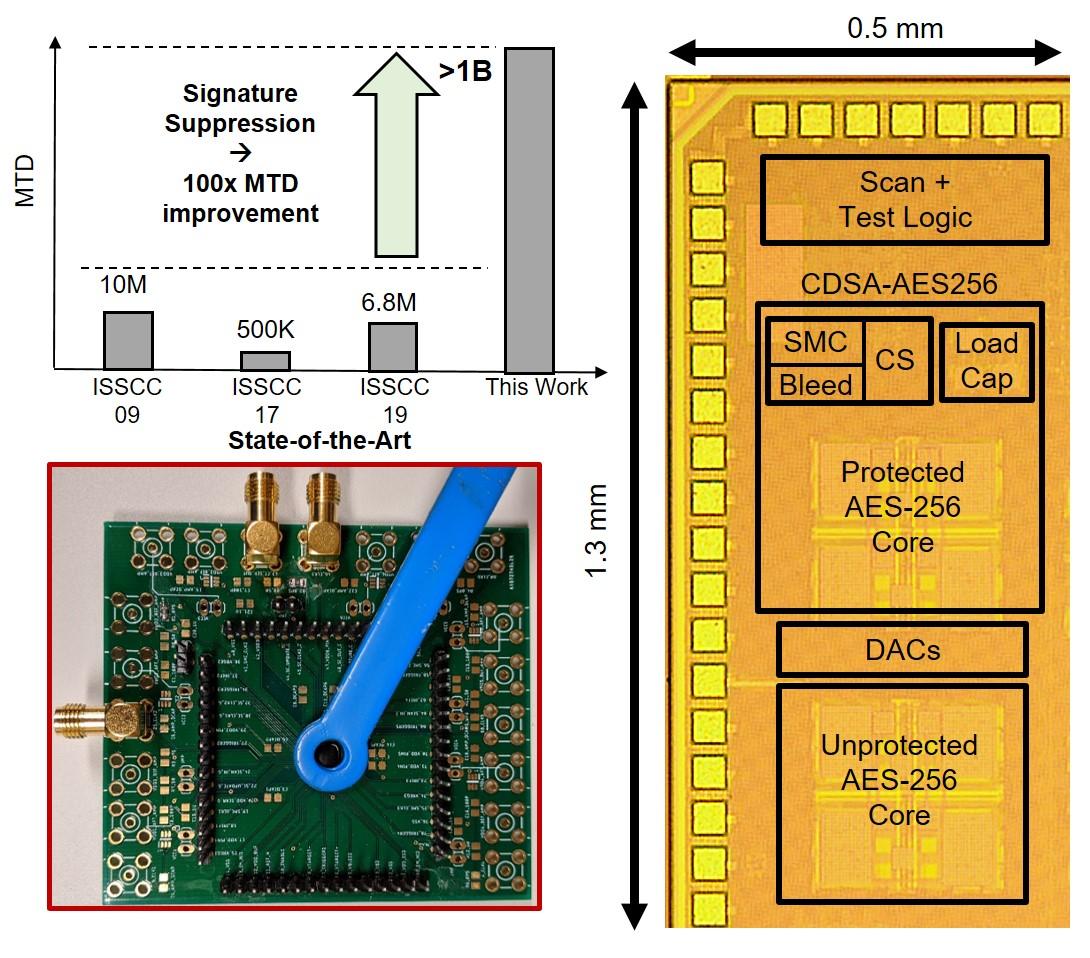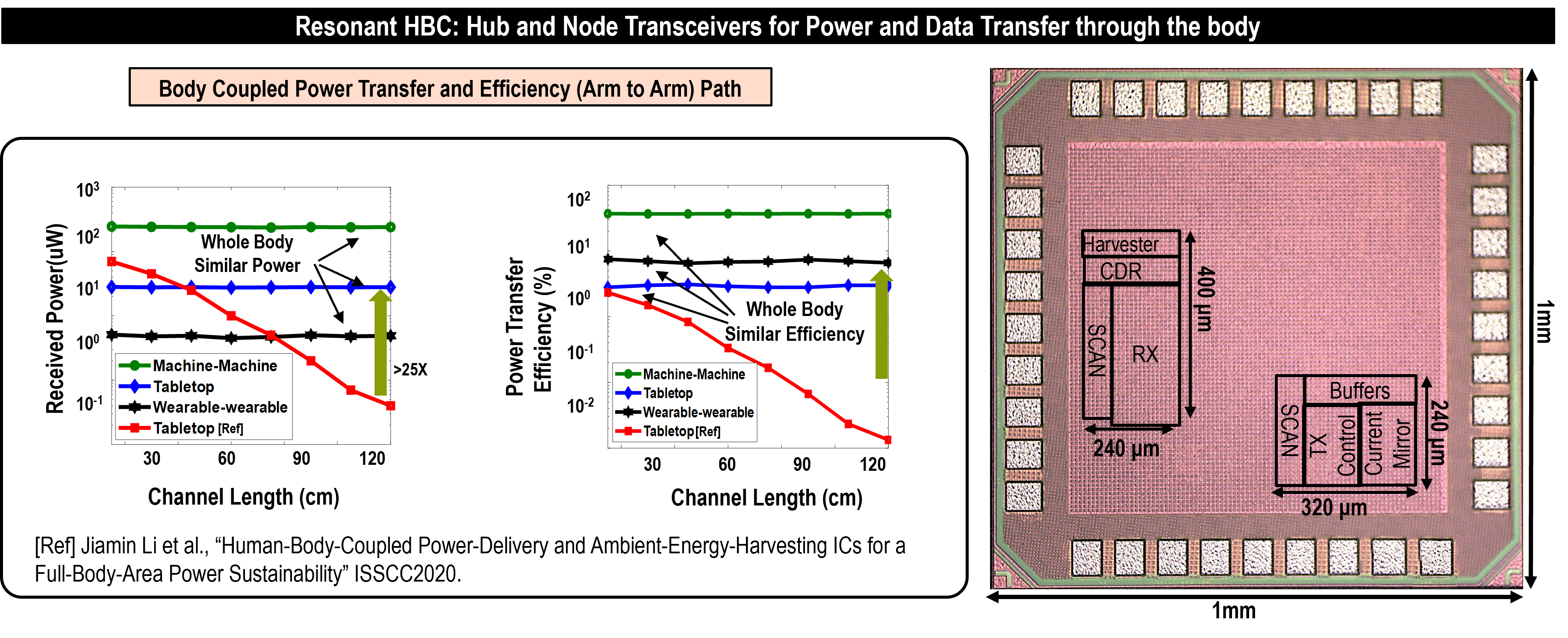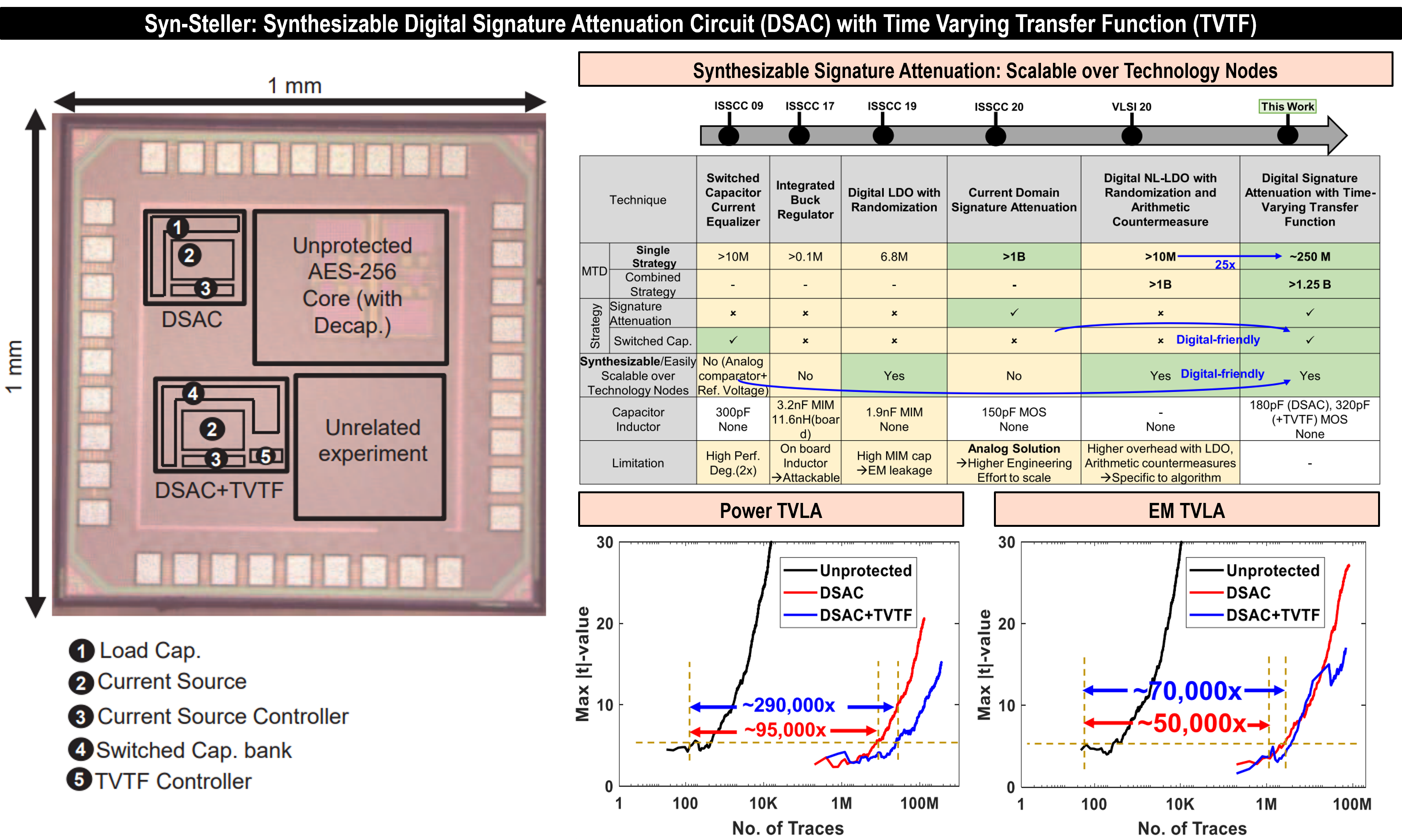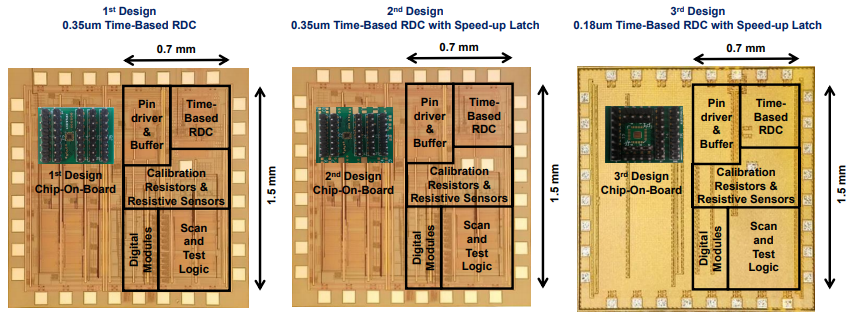Chip Gallery

- Process: 65nm TSMC CMOS process.
- Design: Electro-Quasistatic HBC Node
- Publications: JSSC2021

- Process: 65nm TSMC CMOS process.
- Design: A 41.5pJ/bit, 2.4GHz Digital Friendly Orthgonally Tunable Transceiver SoC.
- Publications: CICC2020

- Process: 65nm TSMC CMOS process.
- Design: Low-Overhead generic countermeasure for Power and EM side-channel attacks, consisting current domain signature attenuation and low-level routing.
- Publications: ISSCC2020.

To be updated

- Process: 14 nm Intel CMOS process
- Design: 32 Gbps 4-Channel Capacitive Proximity Communication Transceiver
- Publication: ISSCC 2016, JSSC 2016 World's fastest and most-energy efficient mm-scale capacitive Proximity Communication Link

- Process: 22 nm Intel CMOS process
- Design: 25.6Gb/s Differential and DDR4/GDDR5 Dual-Mode Transmitter
- Publication: ISSCC 2014

To be updated

- Process: 65 nm TSMC CMOS process
- Design: DVH-Receiver with Wideband Jammer Detector
- Publication: Shreyas Sen, Ph.D. Thesis, Georgia Tech, 2011 Wideband Jammer detector allowing programmable jammer detection time (5us to 6ms). This allows adaptive receiver power vs. performance trade-off when a jammer is not present







